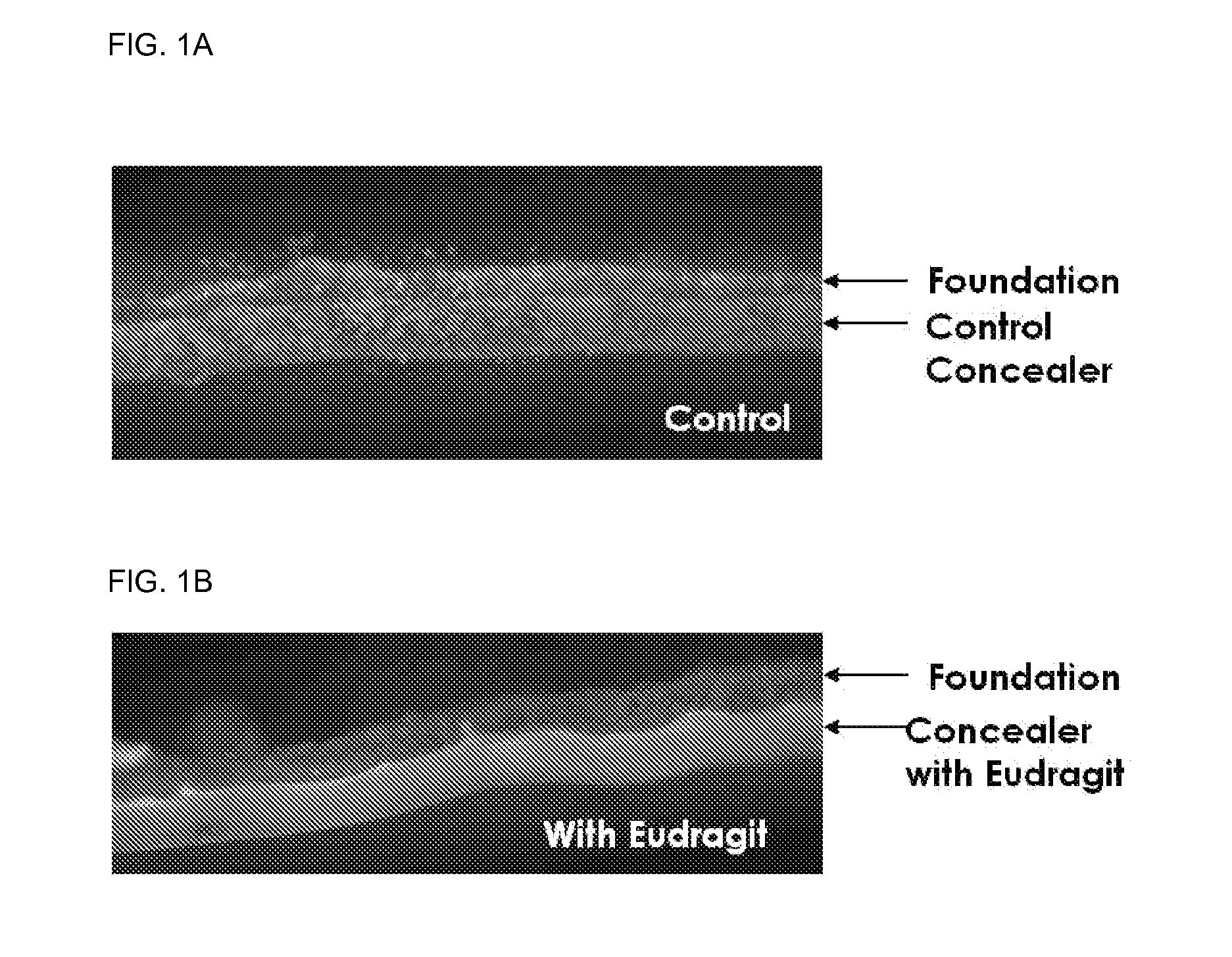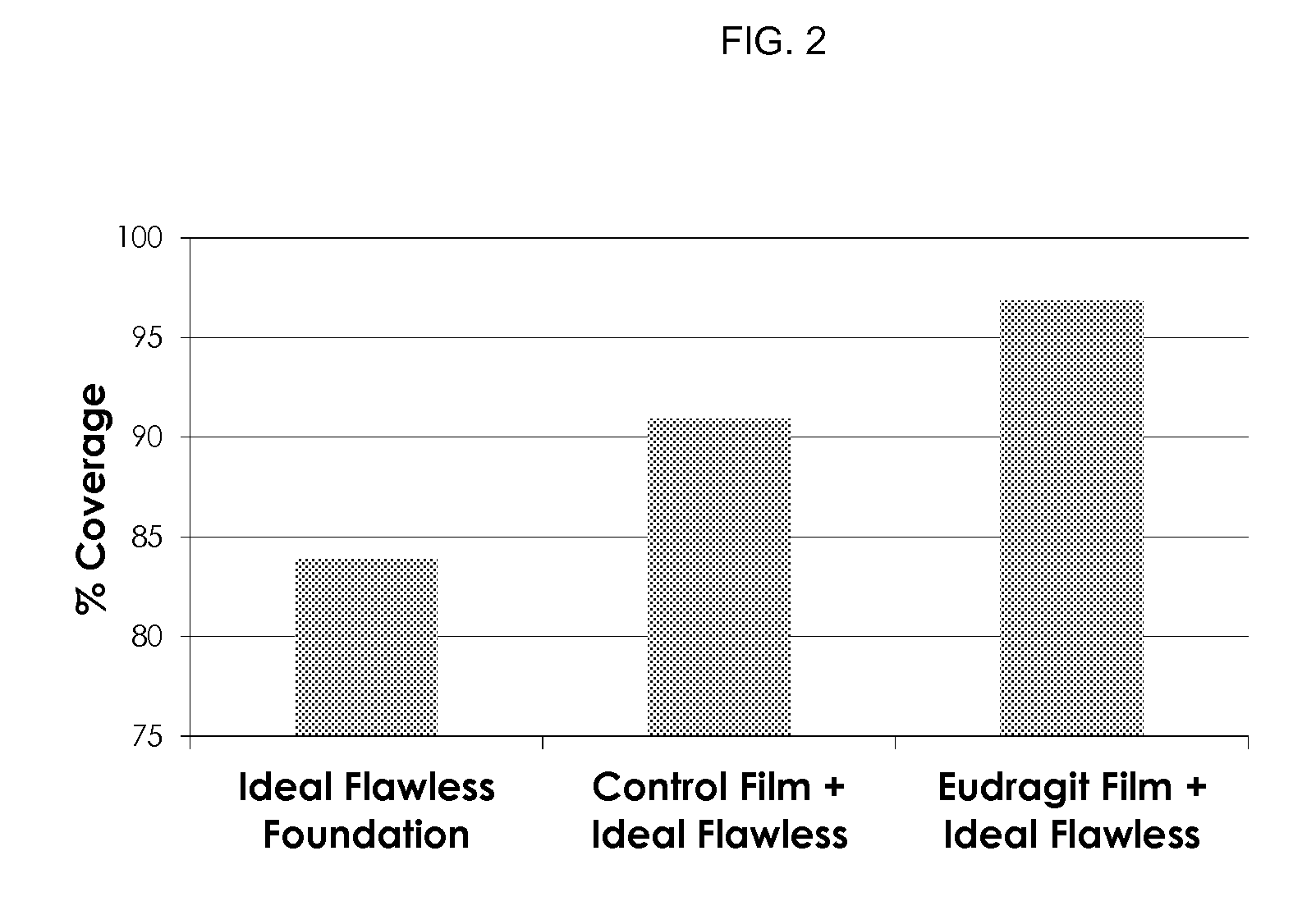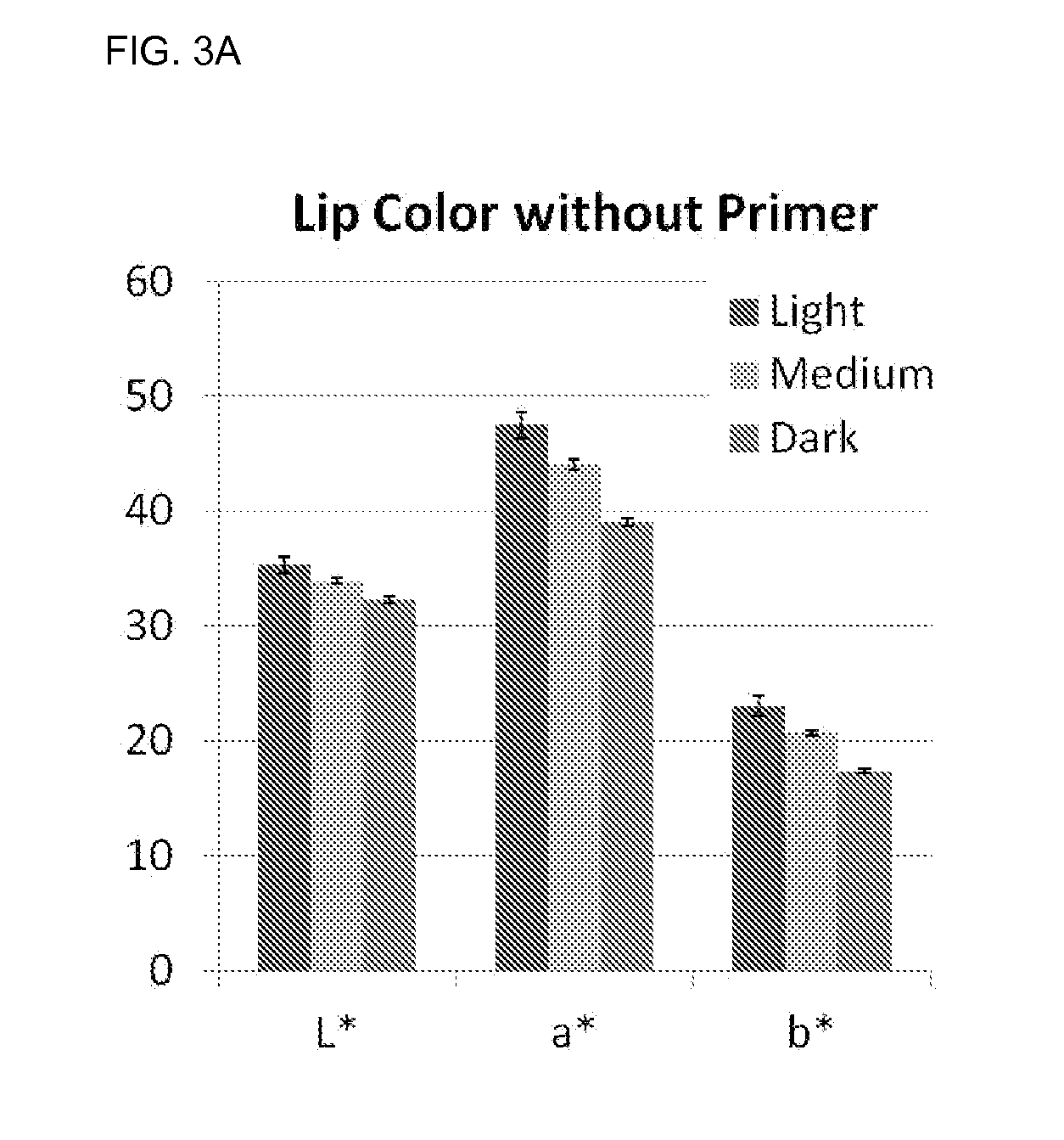Multi-layer cosmetic films
- Summary
- Abstract
- Description
- Claims
- Application Information
AI Technical Summary
Benefits of technology
Problems solved by technology
Method used
Image
Examples
example 1
Immiscibility
[0138]A control concealer having the formula detailed below in Table 1 was prepared.
TABLE 1Control Concealer FormulaDescriptionPercentageWater40VEEGUM0.4DEMINERALIZED WATERqsXANTHAN GUM0.2BUTYLENE GLYCOL6.45PRESERVATIVE0.6CHELATING AGENT0.1POE (20M) SORBITAN MONOSTEARATE2.75TITANIUM DIOXIDE12.25IRON OXIDE-YELLOW1.65IRON OXIDE-BLACK0.15COSMETIC RED OXIDE:BUTYLENE 1.1GLYCOL GRIND 1:1TREATED TITANIUM DIOXIDE4.36FUMED SILICA1.2PROPYLENE GLYCOL DICAPRYLATE / 5.8DICAPRATEETHYLENE GLYCOL MONOSTEARATE2.2POP (2M) MYRISTYL ETHER PROPIONATE2.2SORBITAN MONOSTEARATE1.1ETHYLHEXYL-METHOXYCINNAMATE2.5CYCLOMETHICONE PENTIMER4.32WATER0.5IMIDAZOLIDINYL UREA0.4
A concealer adjusted to pH 7.5 containing Eudragit (4% in water phase) having the formula detailed below in Table 2 was prepared.
TABLE 2Eudragit Concealer FormulaDescriptionPercentageWater40EUDRAGIT S1004VEEGUM0.4Sodium Hydroxide 50%1.25DEMINERALIZED WATERqsXANTHAN GUM0.2BUTYLENE GLYCOL6.45PRESERVATIVE0.6CHELATING AGENT0.1POE (20M) SOR...
example 2
A. Coverage
[0141]In addition, the coverage of the foundation (Ideal Flawless Foundation)(Control), the above-noted control concealer and the foundation (Control), and Eudragit concealer and the foundation were compared. Each sample was drawndown (3 ml thickness per layer) on both a black Leneta card and a white Leneta card and allowed to dry for four (4) hours, after which the luminous reflectance (L*) of each of the films that were drawndown was evaluated using a Konica Minolta handheld spectrophotometer. The coverage was based on the average of these data points, and was computed using the following formula:
(Coverage)=100*L*(on black) / L*(on white).
[0142]As shown within FIG. 2, The coverage (the ratio of the measured L* value of the film on a black vs. white background) increased significantly, from @ 84% with foundation alone and @ 91% with control concealer and the foundation to @ 96% with Eudragit concealer and foundation). Thus, the multi-layered immiscible cosmetic of the curr...
example 3
Color Trueness
[0146]The ability of the compositions of the current invention to maintain consistency of color across skin types, i.e., color trueness, was evaluated as follows. A lip color was made in accordance with the formula noted in TABLE 4 below.
TABLE 4Lip Color FormulaIngredientPercentageAcrylates38.41CopolymerIsododecane38.41Castor Oil11.59Red 72.86TiO22.75Red 6 Ba Lake5.3Black Fe2O30.23Yellow 5 Al Lake0.45
[0147]The same lip color was then applied (3 ml drawdowns) onto three different color substrates, Leneta cards with colors to represent light, medium and dark skin tones were utilized having the following properties (TABLE 5):
TABLE 5L*a*b*Light78.766.34614.526Medium66.72211.120.24Dark50.49615.23828.046
[0148]A spectrophotometer was then used to measure the L*, a*, and b* of the lip color on each of the Leneta cards. FIG. 3A shows the measurements for each of the skin color Leneta cards and illustrates the variances in color between the skin tones.
[0149]Subsequently a primer...
PUM
| Property | Measurement | Unit |
|---|---|---|
| Fraction | aaaaa | aaaaa |
| Time | aaaaa | aaaaa |
| Mass | aaaaa | aaaaa |
Abstract
Description
Claims
Application Information
 Login to View More
Login to View More - R&D
- Intellectual Property
- Life Sciences
- Materials
- Tech Scout
- Unparalleled Data Quality
- Higher Quality Content
- 60% Fewer Hallucinations
Browse by: Latest US Patents, China's latest patents, Technical Efficacy Thesaurus, Application Domain, Technology Topic, Popular Technical Reports.
© 2025 PatSnap. All rights reserved.Legal|Privacy policy|Modern Slavery Act Transparency Statement|Sitemap|About US| Contact US: help@patsnap.com



